Is the following statement TRUE or FALSE?
Oils are good for any skin type, including oily skin.
The answer is definitely TRUE!
But there is quite a bit of confusion and misinformation when it comes to oils in skincare. For example, I sometimes hear this: “Don’t use an oil if you have oily skin.”
Intuitively, you might think that adding oil to oily skin makes it more oily. But the opposite is true. Oils can actually help oily skin! In fact, some oils regulate oil production and help tame over-active sebaceous glands.
So today’s post is all about face oils – a detailed look at why your skin likes oil, the different ways you can nourish it, what face oils can do for skin, the best oils for each skin type, and tips for applying oil.
The Health of Your Skin Depends On Lipids
Before I dive into oils, it’s important for me to explain something fundamental about skin.
Skin is partially made of lipids (a type of fatty substance). The outer layer of skin (epidermis) is composed of skin cells surrounded by lipids.
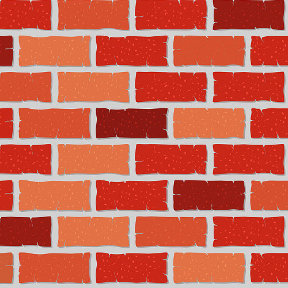 Picture a brick wall. The skin cells look like bricks. The mortar holding those bricks together are the lipids in your skin.
Picture a brick wall. The skin cells look like bricks. The mortar holding those bricks together are the lipids in your skin.
Healthy skin is like a strong brick wall. It doesn’t have cracks or holes. If there are any cracks in that brick wall, guess what happens? Leakage. Same thing with skin. Water is lost more easily, and chemicals, allergens, or bacteria are more likely to penetrate skin, causing irritation and inflammation. In other words, the beginning of many skin issues. Acne and sensitized skin are big ones.
What makes that brick wall solid and secure? The lipids mostly. The lipids are responsible for holding that brick wall together, keeping it strong, and trapping water. When you lack lipids, your skin loses strength and softness. Your barrier becomes more susceptible to damage and irritation. And it loses water faster.
Lipids also make up 50% of cell membranes, and they are involved in cell-to-cell signaling. So they are VERY important to skin!
How Does Skin Get Nourished?
Now that you know lipids are a vital component of skin, it’s important you feed them. Lipids are continually lost through cleansing, exfoliation, product usage, dry air, heat, sun, and pollution.
How do the lipids in skin get nourished? In three ways:
- Sebum – your skin naturally produces a type of oil, called sebum. That oil is produced by the sebaceous glands, which are attached to pores (the technical term for a pore is follicle).
- Diet – eating foods that are rich in fatty acids or taking omega-3 fatty acid supplements
- Skincare Products – applying oils or oil-rich (emollient) products to skin
Sometimes, diet alone isn’t sufficient to nourish skin. Especially when the weather is harsh or with increasing age, when sebum production slows down. This is when applying a face oil can help a lot.
Lipids are composed of fatty acids. So if you want more lipids, you give it more fatty acids!
Oils are a rich source of fatty acids, which makes them highly nourishing for skin.
The Benefits of Using A Face Oil
Because oils are composed of fatty acids (just like the lipids in the epidermis), they penetrate skin easily. This characteristic makes oil an excellent moisturizer.
Oils also do an excellent job of repairing damaged skin. If your skin barrier has been compromised (has micro cracks), an oil quickly repairs the damage by filling in those cracks.
Oils also lubricate skin and lock in moisture by creating an occlusive barrier over skin. (Occlusive means to block.)
An occlusive barrier does two things:
- Prevents things on the outside from entering skin
- Delays internal water from evaporating into air.
The net effect is skin that stays moist longer.
Many face oils today are made of plant oils, which offer extra benefits for skin, such as vitamins, minerals, and antioxidants. So in addition to strengthening your skin barrier, an oil can do much more.
Who Is Oil Good For?
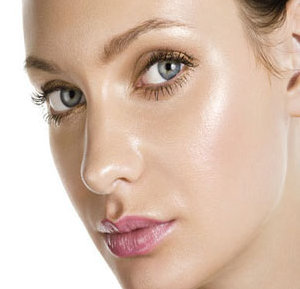 Oils are especially helpful for:
Oils are especially helpful for:
- dry skin
- damaged skin/compromised barrier – due to physical or chemical trauma to skin, excessive sun exposure, poor habits, and other assaults to skin
- inflamed skin
- acneic skin – especially if dried out from drying acne treatments
- oily skin – especially if dried out from over-cleansing or aggressive oil-control products
In theory, anyone can use an oil. In practice, it’s a bit more complicated to figure out which oil is suitable for your skin, which brings me to my next point..
What Matters In An Oil
Not all oils are created equal.
You have to find a good quality oil – by quality, I mean the source of the ingredients in the oil and the method of production. Those two factors can create very different oils.
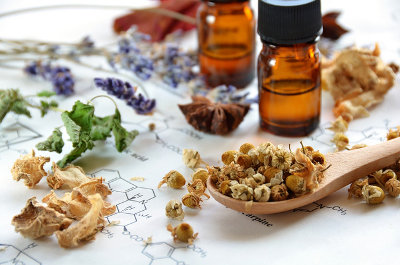 Plant oils, in particular, are tricky due to their potential to cause allergic reactions or clog pores. The way the oil is extracted and purified matters, especially when it comes to essential oils. Impure, adulterated oils may contain elements that are sensitizing to skin.
Plant oils, in particular, are tricky due to their potential to cause allergic reactions or clog pores. The way the oil is extracted and purified matters, especially when it comes to essential oils. Impure, adulterated oils may contain elements that are sensitizing to skin.
Some people break out from oils. This is not necessarily because the oil is comedogenic (pore-clogging). If you are allergic or sensitive to a particular plant ingredient, an oil that contains that ingredient can make you break out too (due to inflammation).
So, it’s important to choose a high quality oil. Highly refined oils are less likely to be irritating and comedogenic. Plus they absorb faster.
What Kinds of Oils Are Good For Skin?
Oils are hot now. Today, you can find a range of oils – from single source oils to blends of 10-15 different oils. There’s always a new flavor of the month – argan, marula, moringa, wild carrot, you name it!
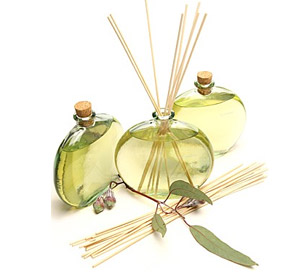 The oils may be simple, common household oils such as coconut and olive, well known essential oils such as rosehip and jasmine, or exotic oils such as baobab and tamanu.
The oils may be simple, common household oils such as coconut and olive, well known essential oils such as rosehip and jasmine, or exotic oils such as baobab and tamanu.
And now the latest trend is oils that contain additional anti-aging ingredients, such as antioxidants or peptides. Oils are no longer just for nourishing skin. They are skin multi-taskers!
The best oils for skin are the ones with rich sources of omega 3 and omega 6 fatty acids.
Omega 3 and Omega 6 are two major groups of fatty acids in skin:
Omega 3 Fatty Acids
- ALA – Alpha Linolenic Acid – this is an Essential Fatty Acid*
- EPA – Eicosapentaenoic Acid
- DHA – Docosahexaenoic Acid
Omega 6 Fatty Acids
- LA – Linoleic Acid – this is an Essential Fatty Acid*
- GLA – Gamma Linolenic Acid
- and 9 others
*An Essential Fatty Acid is called ‘essential’ because it cannot be synthesized by the human body. The fatty acid must be obtained from dietary sources.
Omega-3 and Omega-6 fatty acids are potent anti-inflammatory agents.
Gamma Linolenic acid (GLA), which is synthesized from Linoleic acid, also has potent calming action.
Acne and Oily Skin Need Essential Fatty Acids
By now you know that fatty acids are essential structural components of skin.
There’s something else you should know – Essential Fatty Acids are a component of human sebum.
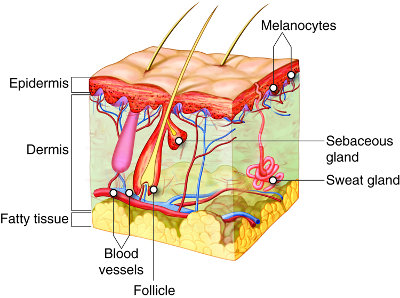 People with acne have been found to have low levels of linoleic acid in their surface lipids. This lack is thought to be a cause for excess sebum production.
People with acne have been found to have low levels of linoleic acid in their surface lipids. This lack is thought to be a cause for excess sebum production.
An oil applied topically to acneic or oily skin can address a potential lack of essential fatty acids, and thereby control excess oil production.
Many acne treatments tend to be drying too. So an oil helps to restore any surface oil that has been stripped.
The same goes for oily skin that has been over-cleansed. Over-cleansing oily skin will actually lead to more production of sebum!
The important thing for oily or acneic skin is your choice of oil, how you apply it, and how frequently you use it. Too much oil at one time or applying oil too frequently can lead to clogged pores, even if the oil is perfectly fine.
Good Oils For Each Skin Type
There are many plant oils used in skincare products today. Way too many to cover. But I’d like to point out a few particularly good ones that are easy to find and won’t break the bank.
The following oils are all compatible for human skin and contain a high amount of essential fatty acids. They also offer antioxidant, anti-inflammatory, or anti-bacterial benefits.
Acne-Prone or Oily Skin
Jojoba oil – closely resembles human sebum and is therefore easily absorbed by skin. As a result, less sebum is produced, and oil levels are more balanced. Not comedogenic either, so an excellent choice for acne-prone skin.
Borage Seed oil – excellent source of omega-6 fatty acids, in particular GLA (gamma linolenic acid), which provides anti-inflammatory relief to inflamed skin
Grape Seed oil – helps balance oil levels and acts as an astringent, so good for acne-prone skin, also rich in polyphenols and proanthocyanidins
Apricot Kernel oil – absorbs easily, ideal for oily and sensitive skin
Sea Buckthorn oil – rich in Vitamin E (a crucial ingredient that protects lipids from free radical oxidation) and beta carotene
Tea Tree oil – has anti-bacterial properties
Squalane oil – a skin-identical ingredient that combats over-active sebaceous glands
Sensitive or Damaged Skin
All of the oils above (for Oily/Acneic Skin)
Evening Primrose oil – rich in linoleic acid and GLA (gamma linoleic acid), high in antioxidants
Sunflower oil – very high in Vitamin E, which protects the lipids in cell membranes from free radicals (lipid peroxidation)
Normal or Dry Skin
Guess what? You’re a lucky one. You can use any kind of oil! You have a world of options, provided that you’re not allergic to any of the plant ingredients.
Blends of plant oils will offer the most benefits. There are so many phytochemicals in plant oils that all of them will confer some useful protective or reparative benefits.
Let your own preferences be your guide, which is the next point..
Oil Preferences – Scent, Weight, and Viscosity
For me, three things matter the most when it comes to picking an oil – scent, weight, and viscosity.
SCENT
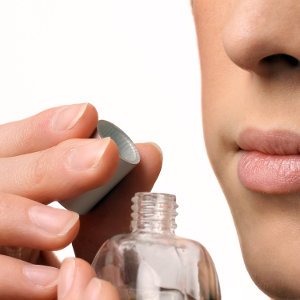 Scent is the make or break factor for me. If I don’t like the smell of an oil or the scent is too strong, I have to pass, no matter what.
Scent is the make or break factor for me. If I don’t like the smell of an oil or the scent is too strong, I have to pass, no matter what.
Face oils made with plant oils are concentrated and therefore smell more strongly than any other facial product.
You have to like how your product smells or you won’t use it. Don’t choose an oil just because it happens to be the most popular one promoted in the media or by beauty bloggers.
Skin chemistry is different for each person.
Try it on yourself, and you be the judge!
WEIGHT
Weight is how it feels on your skin. Is it light, medium, or heavy? Some are super light and almost weightless, you barely notice there’s anything on your skin. And some are quite heavy. You can feel the weight of the oil on your face. Generally, when they’re heavy, you can also see it (an oil slick).
VISCOSITY
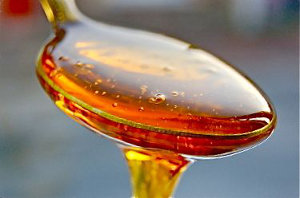 Viscosity refers to how thick something is. Does it flow easily like a liquid (milk)? Or is it so thick it barely moves (molasses)? Or is it in between (light syrup)?
Viscosity refers to how thick something is. Does it flow easily like a liquid (milk)? Or is it so thick it barely moves (molasses)? Or is it in between (light syrup)?
What do you like? There’s no right or wrong type. This is a matter of personal preference.
How to Apply A Face Oil
Oils are concentrated and extremely emollient, so you need only a few drops for the face.
It is best to apply oils at night. During the day, an oil may make your face look shiny. If you wear makeup, the makeup might not spread, absorb, or set properly. Or worse, it might slide later.
There are different ways to apply oil. Some brands have their own recommended methods of applying an oil. For example, rubbing it in the hands to warm it up first.
But I personally do not think it really matters as long as you don’t apply too much.
If you have oily skin, you’ll want to be light-handed in your application and follow Method 1 below.
Method 1 – Patting
Best for oily or combo skin.
- Put 1-2 drops of oil on a finger
- With another finger from your other hand, spread the oil over both fingers
- Pat your two fingers into skin over the areas you want to treat – either the areas that are dry or dehydrated, or over the whole face
- If you run out of oil, add another drop and repeat
Method 2 – Rubbing
Best for dry skin.
- Put a drop of oil onto a finger
- Apply the oil to your skin and quickly rub it over an area of skin
- Repeat Steps 1-2 one drop at a time until your face is fully moisturized
- If you choose to apply oil around the eyes, press the oil into skin, traveling around the eye. Don’t rub your finger under the eyes where the tissue is extremely thin and delicate. And don’t go too close to the eye. The oil will migrate toward the eye. More here on How to Apply Eye Cream for Optimal Results.
This method uses more oil than Method 1. That’s fine since dry skin needs more oil.
Mixing Oil With Moisturizer
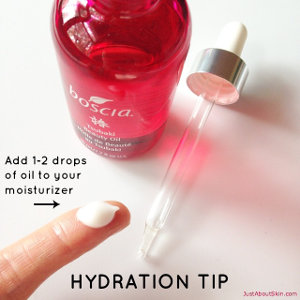 Another thing you can do is mix a drop of oil with your moisturizer. This is an easy way to make a cream or lotion more moisturizing.
Another thing you can do is mix a drop of oil with your moisturizer. This is an easy way to make a cream or lotion more moisturizing.
But don’t mix a batch of oil with moisturizer and save it for later use. Only mix each time you’re ready to moisturize – enough for just one use.
Why? Oil oxidizes easily, which means it gets degraded quickly. Know what rancid cooking oil or fat smells like? Face oils can go rancid too.
Light and oxygen are the biggest triggers of oxidation. But ingredients in skincare products can cause oxidation too. So keep your oils away from light, keep them tightly sealed, and don’t mix them with anything else until you need to.
How Often Should You Use A Face Oil?
A face oil is versatile. It’s a product that can be used every day, or just whenever you need it.
I am a cream person, so oils are not a part of my daily routine. I tend to use oils only in the winter when the climate is dry and my skin craves oil. This is not because I don’t like oils. I just really enjoy creamy textures and will always choose a cream over oil if my skin is normal.
I also use an oil whenever my skin feels raw. It’s a signal to me that my skin barrier is damaged.
If You Have Acne or Oily Skin
If you have acne or oily skin, applying oil every day could potentially lead to clogged pores. It depends on the oil.
I would recommend that you use an oil at most every other day or every few days. You can increase the frequency gradually if the oil doesn’t clog your pores. Also, treat only the areas where you need the oil.
My Favorite Oils
These are my favorite oils right now. As I mentioned earlier, my favorites are primarily driven by scent, and then by weight. I prefer medium-weight oils and am not a fan of heavy oils or super light oils.
- NUDE Progenius Treatment Oil
- Jurlique Skin Balancing Face Oil
- Fresh Seaberry Oil
- Darphin Jasmine Aromatic Care Oil
- Goldfaden MD Fleuressence Oil
- Rodin Face Oil


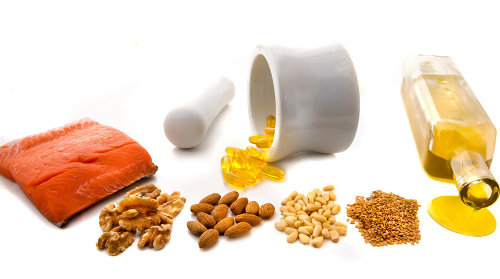
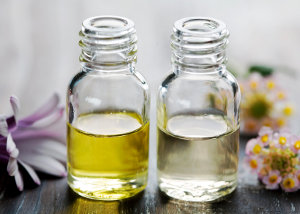
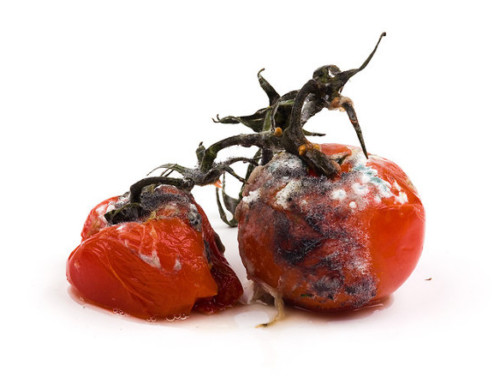

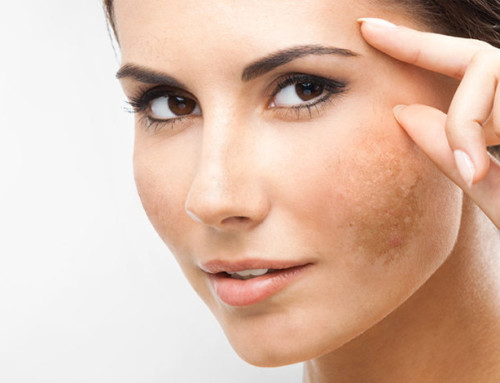


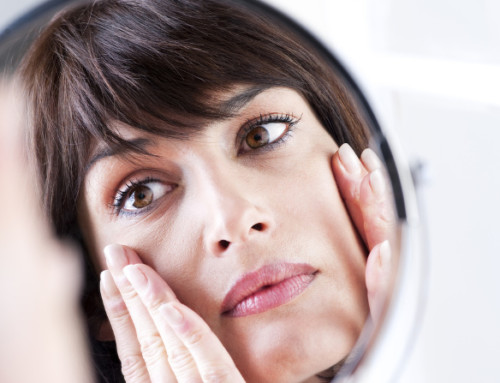
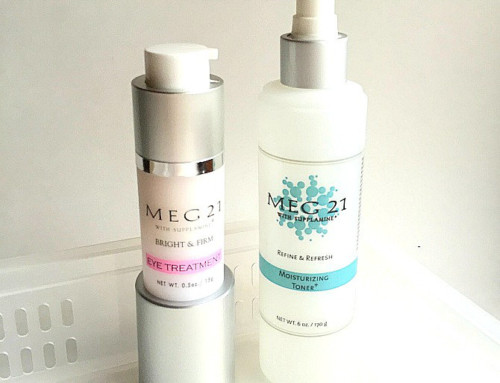

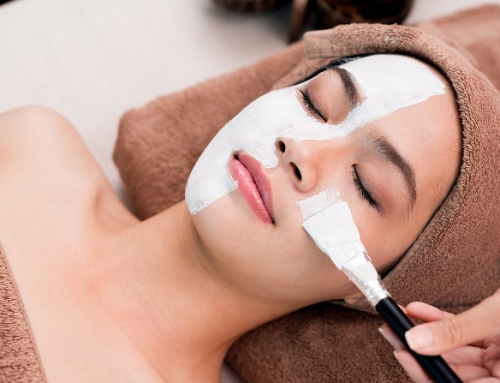
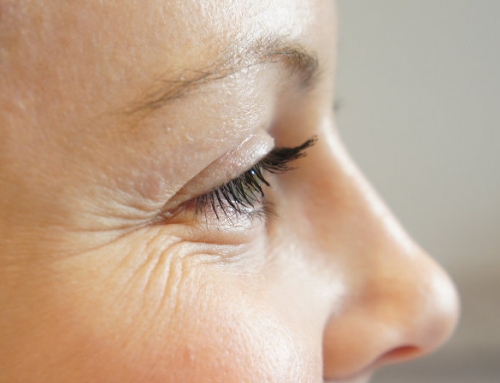
I have NUDE Treatment oil, i dont know how to layer it with cream moisturizer? Do i apply it before or after the cream moisturizer?
You can do it before or after the cream moisturizer. If you can, wait a couple minutes in between. Also, if you apply the oil before the cream, I would press it in with fingers (rather than rubbing it over skin).
Thank you so much for answer my question!!!!
Hi Ms. Lee!,
Your Post was extremely helpful seeing that i almost always use face oils and have trouble knowing which are best. What would you say about using oils primarly for comsumption on face? of course it would only be organic ones such as coconut oil. Ive always heard that you should only use it as a makeup remover and not as a mosterizer, but i use it as one and it tends to be fine untill it quickly gets absorbed into my skin and is all dryed out?
Also seeing that I am on a bubget, would you reccommend any benefical face oils whether in the food market or skincare
Hi Melanie! I am happy to hear that, thank you. You can make your own face oil using a variety of oils purchased from the grocery store or health food store – by blending a few oils together or even using just one. The trick is to find oils that agree with your skin. If you have acne or sensitive skin, you need to be careful with your choices. But if you don’t, then you have many options.
Cooking/salad oils are not as refined as cosmetic grade oils, so they won’t feel as nice (heavier) and they might have a scent that you don’t want on your face. But you know what, if I had no access to any other oil, and my skin needed nourishing, I would use a cooking oil on my skin! (But careful in my application so as not to overload my skin). My recommendation is you shop in a health food store, which will offer more choices, and buy organic, as you said. For ideas, you can look at retail face oils and see what oils are in them. Or the oils listed in this article.
I understand that skincare oils sold in retail stores can be pricey. This may be out of your budget, but one that I like to recommend is Fresh Seaberry Oil – because it works across all skin types and is lightweight enough to be cosmetically acceptable to most people. It’s about $50 for 1.6 oz. which is not inexpensive but more in the mid-range. I don’t think you need to spend more than this amount for a good face oil. Hope this helps! 🙂
Hi Rita,
I have read before that you need to put on the moisturizer before your facial oil because technically creams can’t penetrate oil but oil can penetrate the moisturizer. So I’m confused and was wondering what’s your take on it? When using my Sunday Riley Juno or Clarins oil, I would put that on after my moisturizer. However, when it comes to my Kiehls Midnight Recovery Concentrate, the instruction says to use it before the moisturizer. I’ve been doing as instructed but I want to know if there’s a right or wrong way in layering the oil.
Also, would you recommend coconut oil for double cleansing? I read that some people would use a cloth to remove the oil before going into the second step. Are there any benefits in doing so? Or can I simply just wash the coconut oil with water?
Thank you so much for your blog! It’s been very helpful and informative to me. I’m upset that I didn’t find your blog a lot sooner!
Hi Judy, it’s a good question, but one without a single definitive answer. Both cases can work because there are several routes of entry for ingredients to travel into skin.
The order depends on the moisturizer, specifically how occlusive it is. When a moisturizer is highly occlusive, it is better to apply the oil before the moisturizer so that more oil is absorbed into skin before an occlusive layer is applied over it. An example of this situation is a barrier repair moisturizer made with a large amount of silicones and no water. An extreme example of occlusion is petrolatum.
If you have a moisturizer with a relatively low amount of emollient or lipid ingredients and more water in the base (i.e. a fluid or loose texture), the oil is generally better applied after the moisturizer because: it allows for better moisturizer absorption, and there are fewer issues with application (e.g. product balling up). Have you seen this article?: Layering Products discusses this in more detail.
It’s good to follow the instructions of the manufacturer. There may be another reason to follow a certain order besides increasing penetration. For example, certain ingredients work better when applied earlier in the routine.
I would not recommend coconut oil for double cleansing if you have oily, combination, or acne-prone skin. There is nothing wrong with coconut oil or using coconut oil to remove makeup and oil-based matter from skin. However, plain coconut oil does not emulsify – therefore, it leaves residual oily particles on skin. If you have dry skin and pores that don’t clog easily, this is not an issue. But if you seek a thorough cleanse for your pores, the only way to get that oily residue off is through a second cleanser with a strong enough cleansing agent to cut through oil. That would be foaming, sulfate-based cleansers, which take oil off, but they dry out skin and ultimately hurt the skin barrier. You are better off using a cleansing oil that is specifically formulated and marketed as a cleansing oil, i.e. it emulsifies on contact with water, and therefore rinses off super easily, taking the oil with it. See this article: Double Cleansing.
Thank you for your kind words about my blog. I’m happy you find it helpful!
Thank you so much for taking your time to reply! You are truly wonderful!